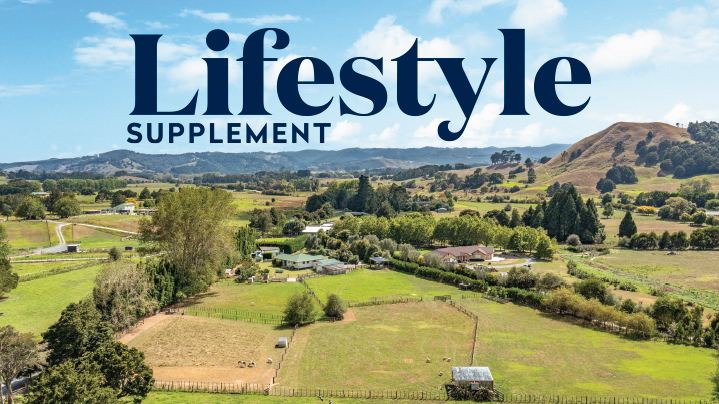Lifestyle supplement
With a hot summer impacting farm feed supplies for many parts of the country, lifestyle block owners have an opportunity to create supplementary income by feeding demand. Bayleys investigates the important role rural landowners can play in supporting feed options for Kiwi farms.
Scorching summers, soggy winters and the ongoing impacts of climate change are offering new opportunities for lifestyle property owners with land to utilise without the demands of a working farm.
“Buyers searching for a lifestyle block will come to us wanting good advice on a location, the scale and suitable uses for land as well as potential income opportunities,” says Raymond Mountfort, Bayleys Auckland’s general manager of lifestyle.
“As the average sale value of property rises, purchasers become more attuned to add-value opportunities,” he notes.
Beyond simple use as a hobby farm, sustainable garden or room for the kids and toys, lifestyle property owners with land to spare are in a unique position to offer supplementary feed to livestock on larger farms throughout the tougher winter months.
A growing number of lifestyle property owners are investigating opportunities including the reservation of an area for feed production or baling hay and silage for sale.
Mountfort says the rising cost of land, which in the Upper North Island has moved some 44 percent in the two months to January 2021 when compared with a year prior, is encouraging owners to investigate alternative uses for their lifestyle properties.
“The rising cost of land, which in the Upper North Island has moved some 44 percent in the two months to January 2021 when compared with a year prior, is encouraging owners to investigate alternative uses for their lifestyle properties.”
“The opportunity for small block holders to boost income from supplementary sales can be useful at certain times of the year, especially when you need to remove grass,” he says.
As dairy farms have become larger to meet production demands, farms smaller than 50 hectares are increasingly behaving as lifestyle blocks one did and capitalising on the demand for supplementary feed.
Landowners with sites smaller than five hectares are advised to weigh their options carefully, with the ability to keep livestock a key variable balanced against being prepared to work with agricultural contractors, learning more about their needs, which is a big attraction for owners with income aspirations.
Mountfort says it’s worthwhile to note that contractors will generally avoid working on lifestyle blocks where gateways are narrow or the economies of scale are unbalanced.
“Similarly, good hay can only come from good grass, and it’s not uncommon for lifestyle blocks to lack the pasture density and quality typically found on closely grazed commercial farms,” he adds.
Lifestyle blocks larger than five hectares in size provide the best opportunities for supplementary income from feed production, as these sites generally have more practical and efficient production capabilities.
“Lifestyle blocks larger than five hectares in size provide the best opportunities for supplementary income from feed production, as these sites generally have more practical and efficient production capabilities.”
For small block owners Mountfort says having livestock can prove more profitable, while providing meat for the household if choosing a home kill service.
“Growing consciousness about where our food is coming from and sustainable farming practices are seeing greater interest in home kill services, so this is a key consideration for lifestyle block owners with families,” he says.
“However, property owners with only a few livestock and surplus feed may find it beneficial to convert this to hay, and keeping it on hand during the cooler winter months.”
“The simple nature of hay supply means it has become an attractive income opportunity for lifestyle property owners, and our buyers have also noted they enjoy the idea of picking up hay as it’s an activity that exemplifies the wholesome allure of a rural lifestyle.
Another consideration could be to offer a block as standing feed for harvest, which can be more straightforward than trying to arrange its cultivation yourself.
“Small block owners could easily get in contact with larger neighbours that may have commercial farming links – some of whom may be able to include their block into their own farm’s rotation depending on size, access and location,” Mountfort adds.
Read more...
[Download PDF]Subscribe to receive the latest residential news and insights from Bayleys’ View magazine.
